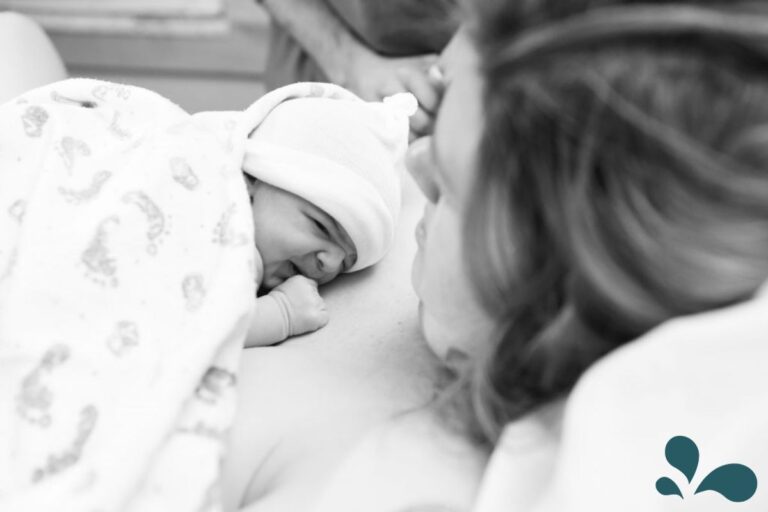Jaundice in newborns is common. Six out of ten babies born at forty weeks gestation get jaundice; eight out of ten in premature babies. There are a variety of reasons why a baby might get jaundice (we describe them below). So, what do you do if your breastfed baby has jaundice? We’re going to help you with that and more. First, let’s cover the basics of jaundice…or go ahead and skip down a few sections to get our recommendations.

What is jaundice?
Jaundice is when there is excess bilirubin in the bloodstream. Bilirubin is a red-orange compound, a byproduct of red blood cells breaking down. This breakdown is a natural process, but excess bilirubin can give someone a yellow tint to their skin or the whites of the eyes, which may indicate an underlying issue.
What are jaundice symptoms?
The most apparent sign of jaundice is yellow-tinted skin and eyes. This symptom typically happens 2-4 days after birth. Severe jaundice can cause a baby to be very sleepy, difficult to wake, feed poorly (and have difficulty gaining weight), or sometimes have brown/brownish urine. If you notice any of these symptoms, you’ll want to contact baby’s doctor.

What causes jaundice?
There are several reasons that your baby might experience jaundice.
- The most typical reason is an immature liver that isn’t filtering out bilirubin fast enough
- Not enough breastmilk to create adequate urine output and bowel movements (which keeps excess bilirubin in the body)
- More severe and rare issues: internal bleeding, sepsis, liver malfunction, red blood cell issues, bile duct issues, enzyme deficiency, incompatibility between mom and baby’s blood, or viral/bacterial infections
Your medical team can help you determine your baby’s specific jaundice case.
What is “Breastfeeding Jaundice?”
Breastfeeding jaundice is when a healthy, weight-gaining, breastfeeding baby with normal urine and fecal output develops jaundice symptoms a week or more after birth. No one knows precisely why this occurs, but it rarely requires a breastfed baby to discontinue breastfeeding, as the breastfeeding benefits far outweigh the concerns.
Breastfed jaundice peaks between 10-21 days of age but can last up to three months. In confirmed cases of breastfed jaundice, no treatment is needed.

Treatment for Jaundice:
Once jaundice is appropriately diagnosed, you can help your baby recover.
- Don’t stop breastfeeding. Breastfeeding is the best way to hydrate baby and encourage urine output. Frequent urination and bowel movements will help baby remove excess bilirubin. Only in very rare cases will baby need to stop breastfeeding. Breastfeeding should only discontinue or pause under the direction of a medical professional.
- Baby may need to be supplemented with formula in addition to breastfeeding. There are options to avoid using bottles (SNS feeding, spoon feeding, cup feeding, and syringe feeding), which you can do under the instruction of an IBCLC.
- Phototherapy is a standard treatment option, which is when baby is placed under bili lights (a large bed-like lamp or a bili blanket that can be placed inside a blanket wrapped around baby), which helps the liver filter bilirubin from baby’s body.
- Ensure baby is getting enough milk. An IBCLC can help you determine if baby is getting enough milk. Baby may be sleepy and need extra help with feedings.
There are plenty of ways that you can help your jaundiced baby. Don’t get discouraged. Jaundice is common, and there is help available.
If you have a jaundiced baby, there’s no need to panic. Relax and breathe. Your medical team and IBCLCs are trained to help you. As IBCLCs and mamas, we know what you’re going through.
If you would like us to help you, contact us by email (consult@thelactationcollection.com) or schedule a consult online. We’ll help you get through this.








